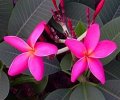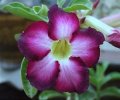Thailand has a number of its plants and trees that grow well in other countries too, Here we have selected a few species for you.
"Jasmine Rice"
Thai Jasmine Rice 100 Heirloom Seeds ORYZA SATIVA
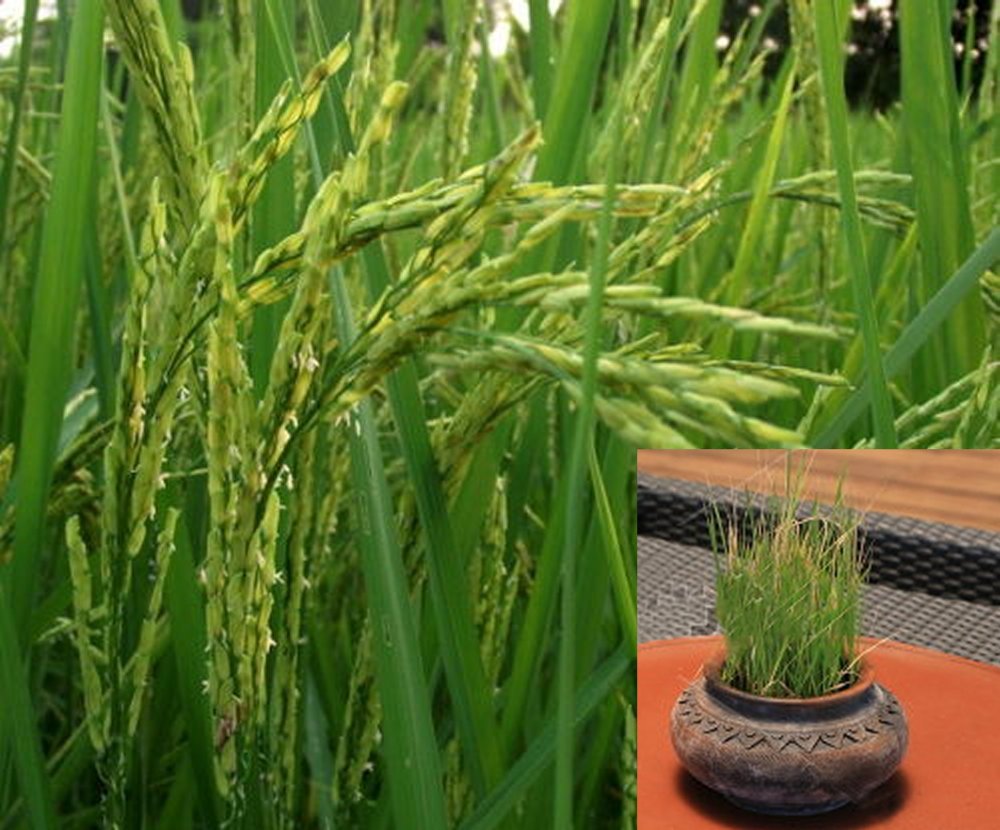
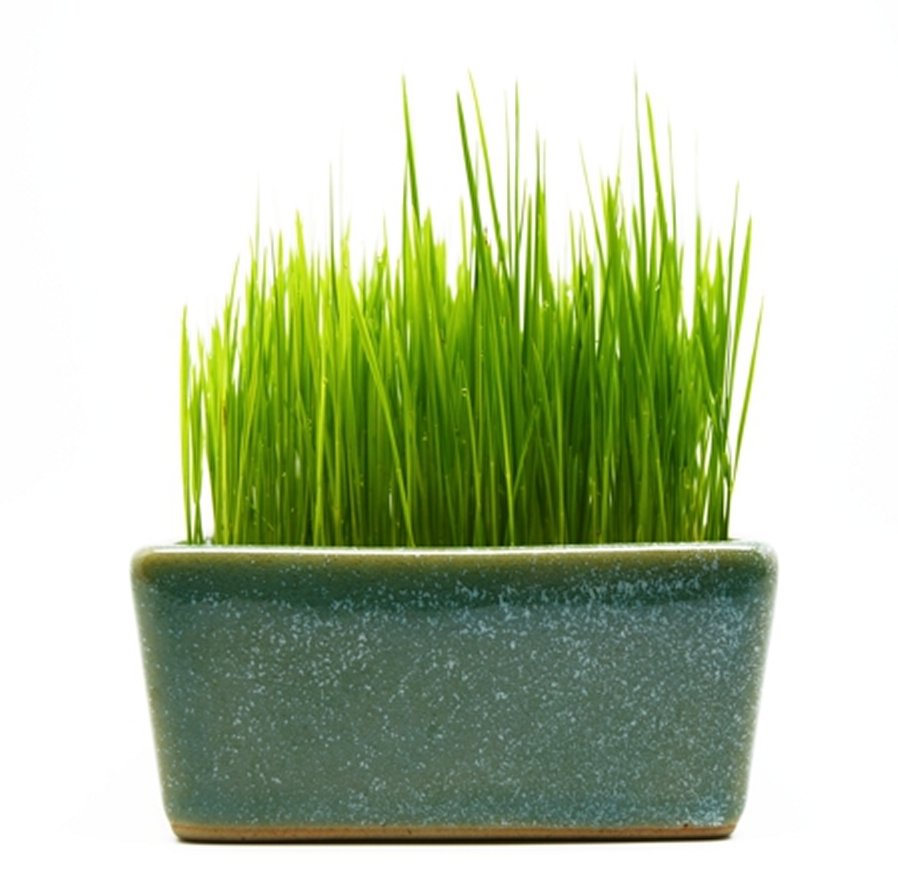
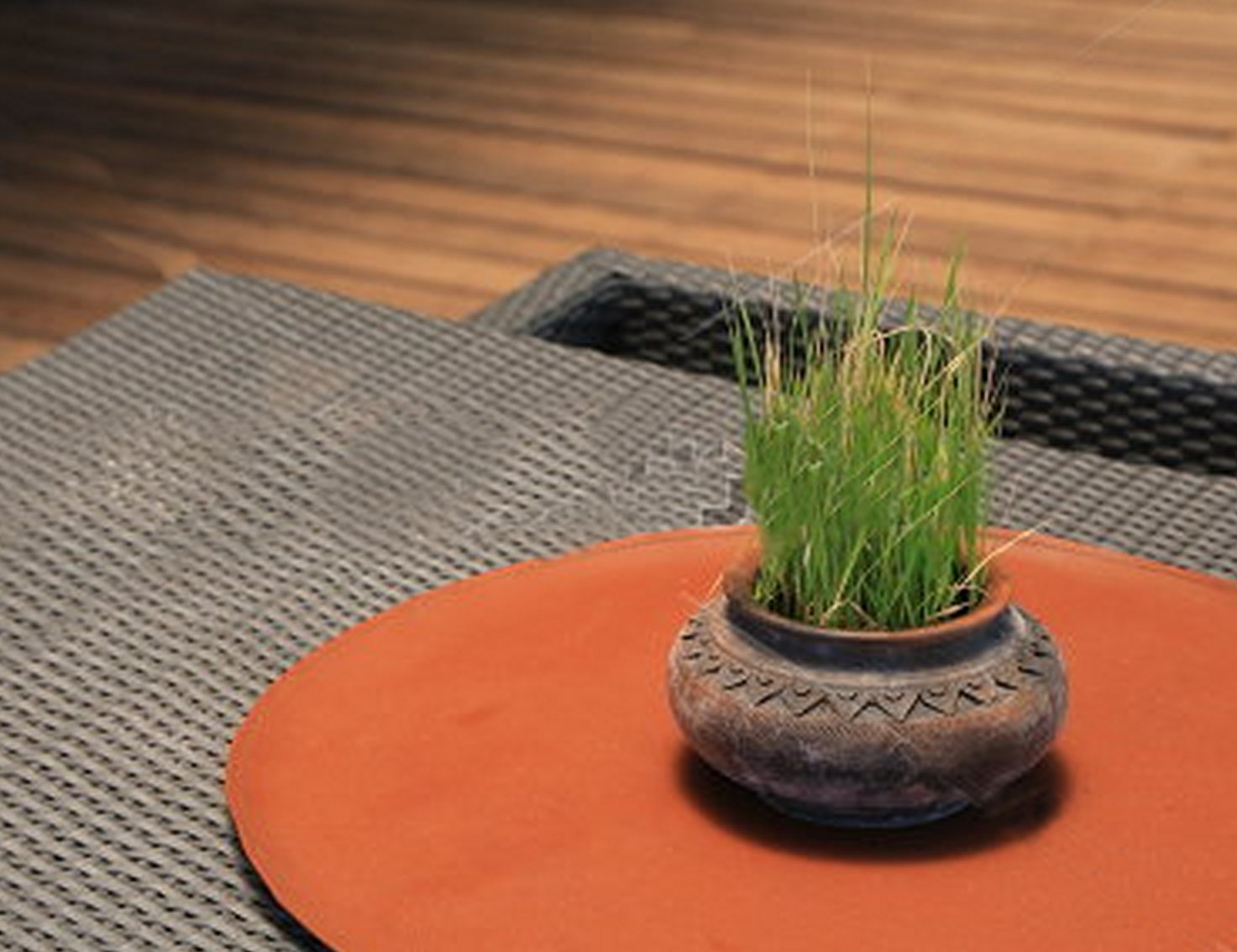
Thai fragrant Jasmine rice is the most famous of thai rice, makes a great table decor
Thai Jasmine Rice Organic, Unique flavor of Thai Rice, Family grown heirloom seeds from Thailand.
Thai Best Rice Species. “Thai Jasmine Rice” Grown tradionally in Issan for years
Jasmine rice is scented and very tasty.
Plant Style: Annual, Outdoor or can be grown in pots indoors as decoration
Plant Size Approx: Medium (0.4 – 1.5m. Tall) (trim down if used for decor)
Cultivating Difficulty Degree: Easy
Location: yard or indoors
Climate: Temperate
Quantity: 100+ Seeds
Package: Zip log Bag
$2.75
"Golden Shower"
10 Seeds Ornamental Thai Golden Shower Tree, Cassia Fistula, very showy
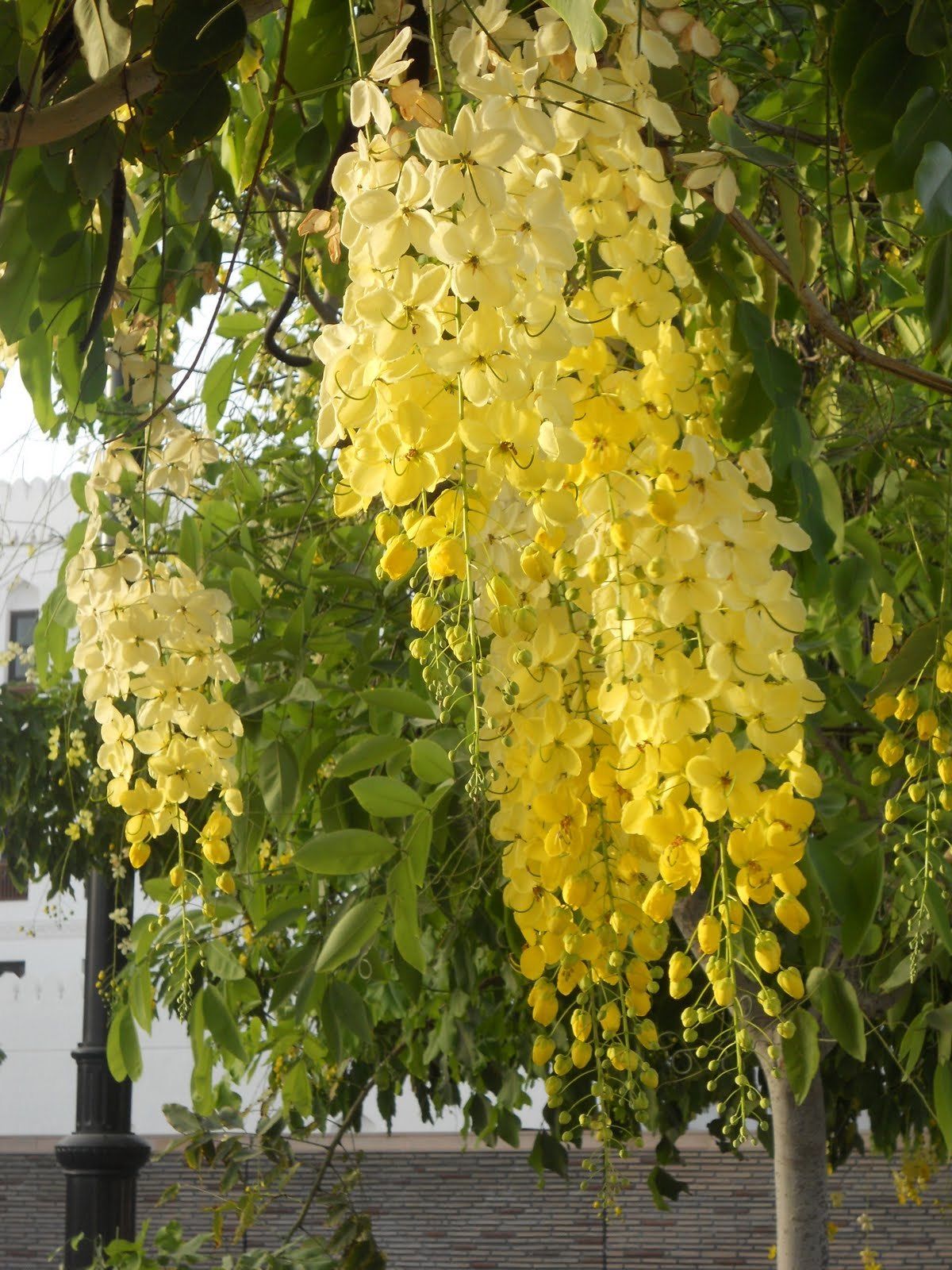
The Thai Golden Shower or Cassia fistula is perhaps the showiest of all the Cassias.
The golden shower tree is the national flower of Thailand, its yellow flowers symbolize Thai royalty.
Its a deciduous tree growing to 9 metres if allowed, it likes well-drained soil and is both drought and frost tender.
Its flowers are large, yellow, fragrant and occur in very long, drooping sprays.
(germinating/guideline only)
Light: Prefers full sun though can tolerate semi-shade.
Moisture: Moderate water regularly. Quite drought and salt tolerant.
Soil: Grow in a wide variety of well-drained soil – can be clayey, loamy, sandy, slightly alkaline or acidic.
Propagation: scatter and push them about 1 cm deep into your garden bed or potted soil at a sunny spot. With regular watering, they should germinate within 10days-1 month. Germination can be hastened by soaking the seeds for 3 days or by scarifying before planting.
$2.95
"Kapok Tree"
White Cotton Silk tree, 15 Seeds, CEIBA PENTANDRA
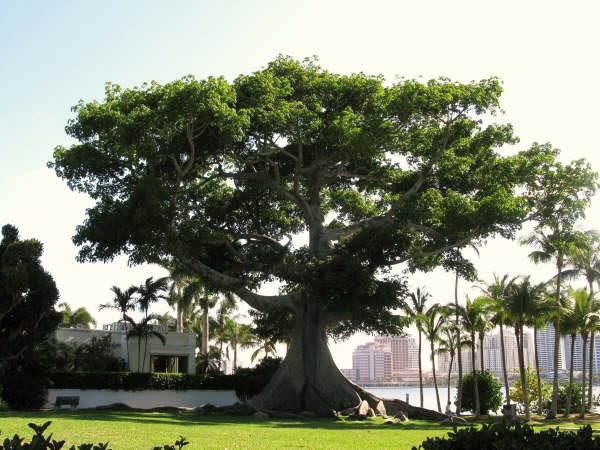
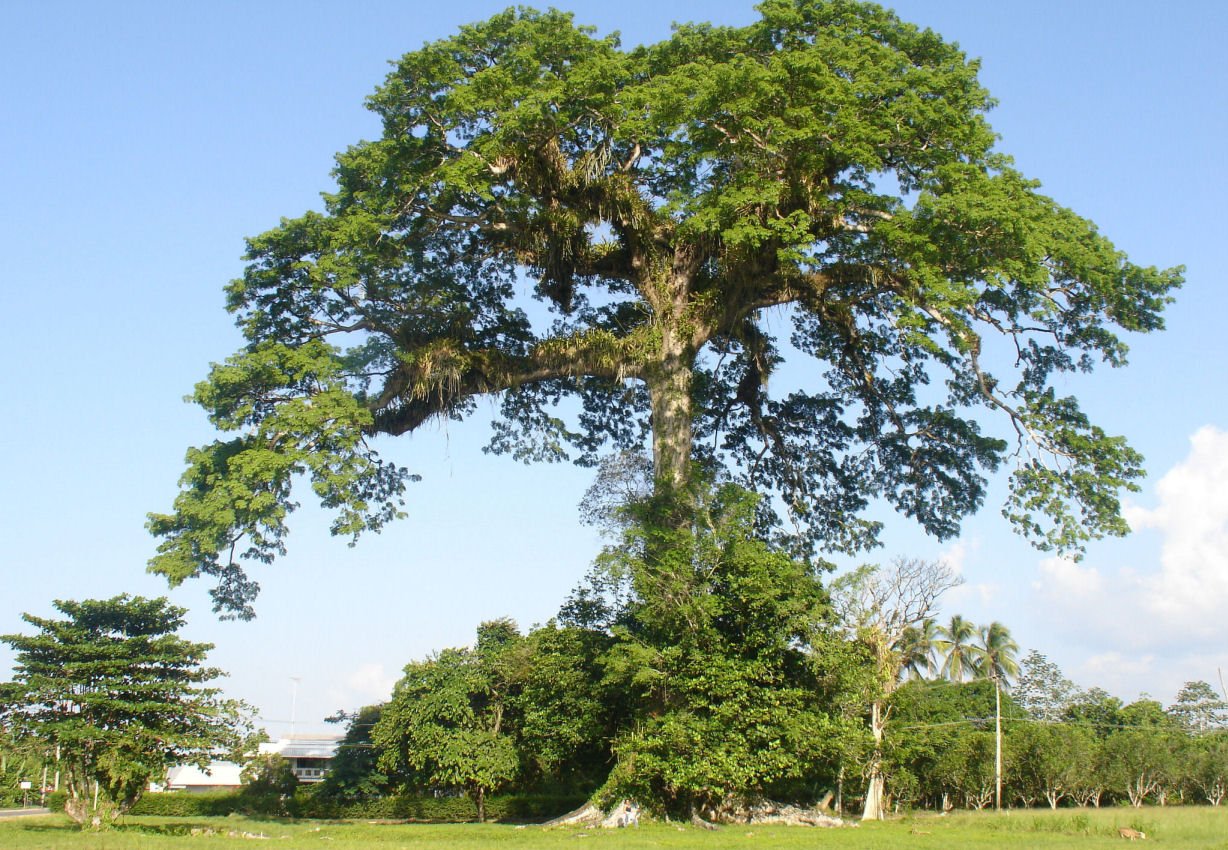
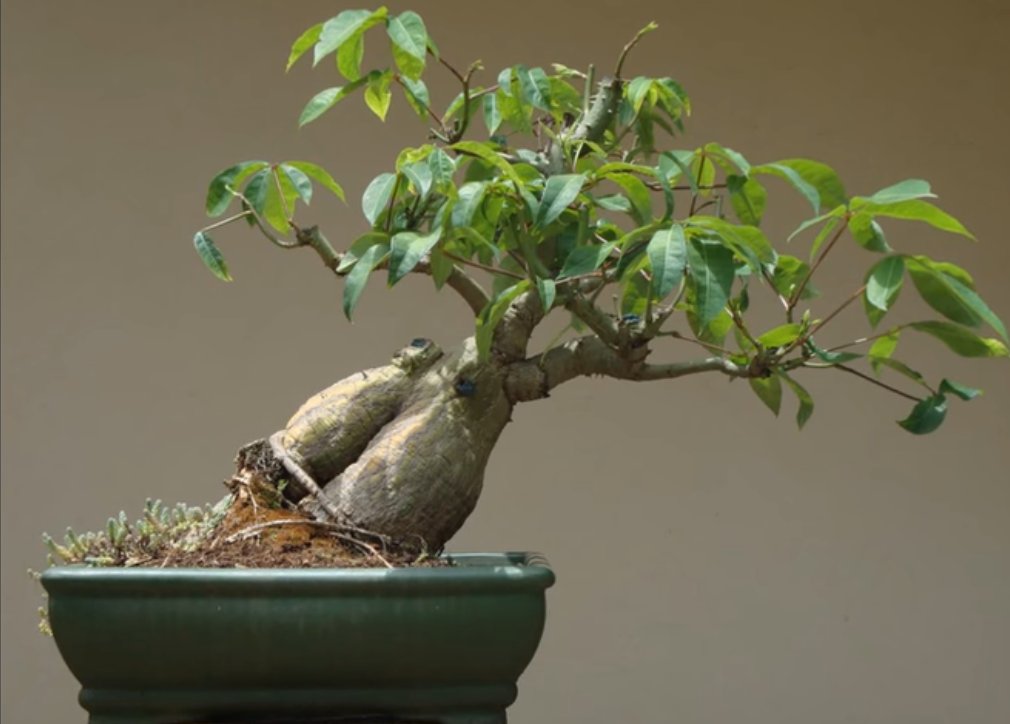
Rainforest tree makes for an interesting bonsai tree
Ceiba pentandra. commonly known as the Kapok tree or Silk-cotton tree The Kapok tree is a majestic tree of the tropical rainforests.
It can grow to a height of 150 feet or more, towering over other trees in the rainforest. Originally a native to South America it now has spread to the primary rainforests of West Africa, and the Southeast Asian rainforests.
The straight trunks are cylindrical, smooth and gray in color, and can reach a diameter of 9 feet. Large spines protrude from the trunk to discourage damage to the trunk. Thin, plank type buttresses stabilize the giant and can extend to 30 feet. The wood is a pinkish white to ashy brown in color, with a straight grain. The branches grow in horizontal tiers, and spread widely.
Kapoks are drought deciduous. This means they shed most or all of their leaves during the tropical dry season. The dry season occurs during the northern hemisphere winter. The leaves are palmate and compound. The 5-9 leaflets are 7-8 cm long and 1-3.5 cm wide. Flowers usually open before the leaves appear, and are clustered on small, new branches. The 5 petals of a flower are about 2.5 cm long and are a creamy white or pale pink in color. The brown seeds are round like peas and are found in pods. The pods are woody, smooth and pendulous, with a light green color. They will burst open while still on the tree after the leaves have fallen. Inside a whitish cotton like fiber surrounds the brown seeds. These are born away on the wind.
In many places the straight trunks of the kapok tree are used to make dugout canoes. The white, fluffy seed covering is used in pillows and mattresses. Since it is buoyant and water resistant it is often used in flotation devices and padding. The seeds, leaves, bark and resin have been used to treat dysentery, fever, asthma, and kidney disease. In Mayan myths the kapok tree was sacred. They believed that the souls of the dead would climb up into the branches which reached into heaven.
Light: Prefers full sun though can tolerate semi-shade.
Moisture: Moderate water regularly. Quite drought and salt tolerant.
Soil: Grow in a wide variety of well-drained soil – can be clayey, loamy, sandy, slightly alkaline or acidic.
Propagation: scatter and push them about 1 cm deep into your garden bed or potted soil at a sunny spot. With regular watering, they should germinate within 10days-1 month. Germination can be hastened by soaking the seeds for 3 days or by scarifying before planting.
$3.25
"Leea Macrophylla"
Thai Leea Macrophylla seeds:great medicinal plant attracting pollinating insects, 5 Seeds
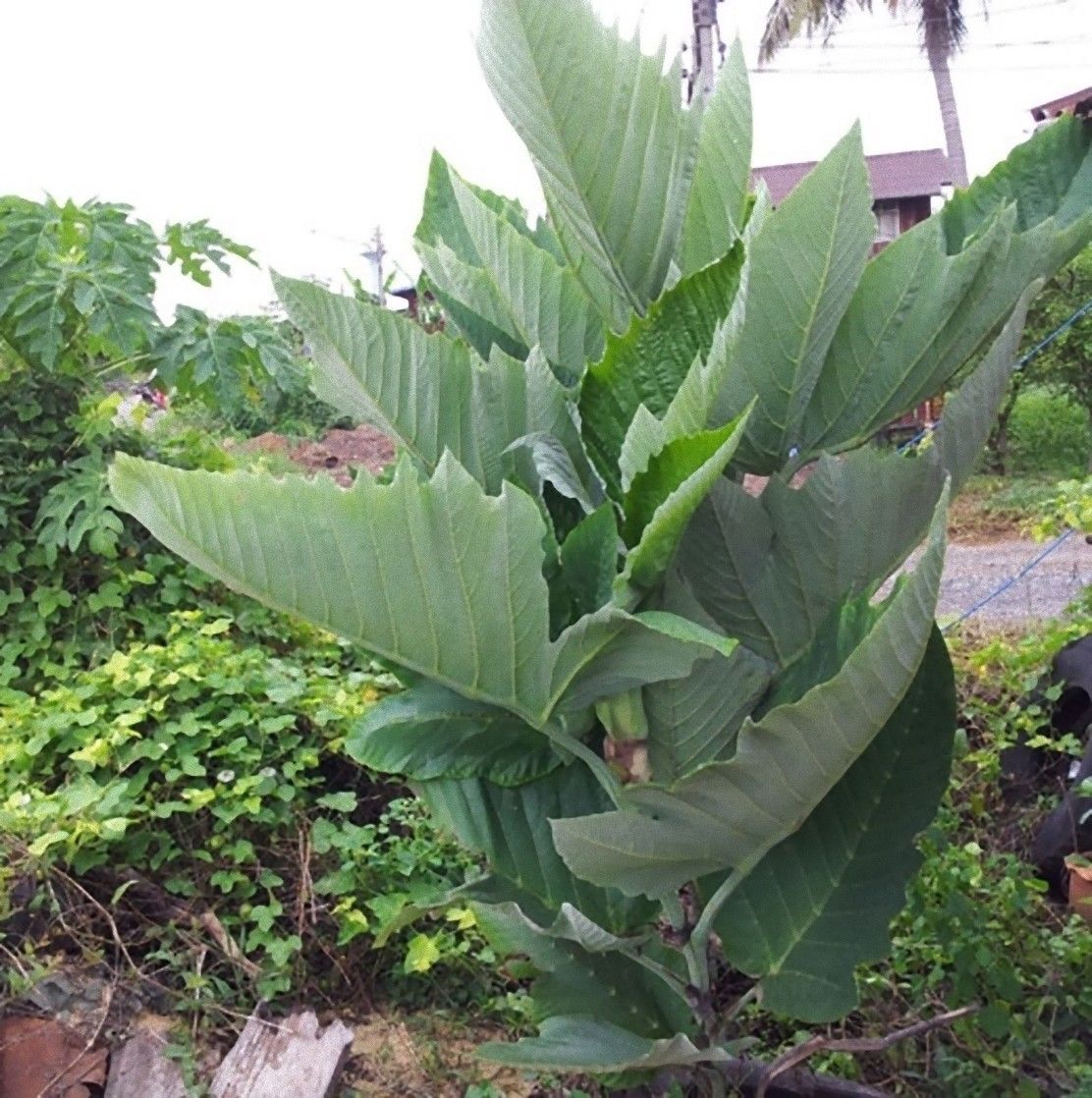
Leea macrophylla is a perennial plant with stems that becomes more or less woody. The plant is often shrub-like, and occasionally tree-like, growing from a tuberous rootstock.
The plant is harvested from the wild for local use as a food, medicine and dye, It is planted in Sri Lanka for its medicinal use and also cultivated in Thaiand and Malaysia.
Edible Uses : Leaves - cooked and eaten as a vegetable. Used as a famine food
Medicinal : The roots are credited with anodyne properties. The root paste is consumed with a glass of milk as a single monthly dose for birth control.
The powdered tuber is used as a treatment for sexual debility in males.
The roots are applied externally as a poultice on wounds and sores, and also as a treatment for guineaworm and ringworm.
The powdered leaves, mixed with honey, are used in the treatment of cancer.
The bark powder is given orally as a treatment for cancer.
There is a Thai folk story about a baby being wrapped in one of this plants leaves.
This variety likes a high level of light, but will do reasonably well in up to 80% shade. Mature height of 6-10', like well drained soil, not water holding or soggy.
Soak them overnight in water for planting the next day. The seeds, can also be stored in a dry cool place for sometime if you're not looking to plant immediately.
Sow the seeds on the surface of the soil and then lightly dust them with a pinch of medium. Spray the top of the soil with a misting bottle and keep the medium lightly damp but not soggy. Once the seedlings appear, which may be as much as 90 days after planting, move the tray to a location with indirect but bright light.
Re-potting the seedlings : The seedlings will need to be transplanted into larger 3-4" containers within a few months. You'll need to do this very carefully since the seedlings are very fragile at this point; they don't have much of a bulb at this point. Once you have re-planted them in a larger container, be sure to keep them moist again so they can re-establish themselves.
It won't be much longer before the 3-4" potted plants will need to be moved into larger 4-6" pots. They will begin to grow quite rapidly at this stage, especially if kept in a humid and well lit environment.
It won't be long before you can move them up to 1 gallon pots and then a few months later put them in the ground.
When planting out you should give each plant at least 3 feet (1 meter) of space, average or better quality soil, monthly fertilization, frequent watering,
Hardiness Zone: 7b and above. If the temperatures average below 40 to 45ºF (4 to 7ºC) for any extended period of time, please dig up the tuber in the fall and store it in a cool, dry place until you can replant it the following spring, when it will grow again
$3.65
"Garlic Vine, Manosa Alliacea"
Garlic Vine Manosa Alliacea Plant Flower, 10 Seeds
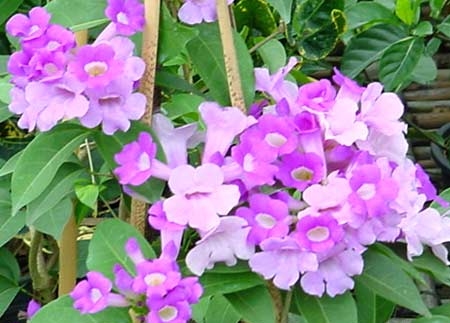
A medium growth, dense evergreen vine with deep lavender flowers and a white throat fading to a paler lavender.
The plant will bloom heavily in the Spring and Fall.
Will have some flowers on and off throughout the year.
It is one of the most rewarding flowering vines that you can grow, unless that you are a vampire!
Strangely enough it smells like garlic. However, it doesn't smell if the plant is left alone, only when the leaves are crushed.
Flowering twice a year you will find it quite often covered with flowers. Flowers start off purple and change to a lighter shade of lavender with age. Eventually fading to almost white. You will see 3 different colour of flowers at the same time on the plant.
Great for chain link fences (or any fence), or a large trellis. This vine has a strong garlic odour, and is even used as substitute for garlic in food.
The entire plant - roots, vine and leaves, are useful. It is used to reduce fevers, treat colds, throat, and respiratory ailments.
The plant is said to help get rid of bad luck and is a favourite with hunters.
It can be grown in containers and should be trimmed after the flowers are gone.
Grow in well-drained soil-less potting mix. Full sun to half-shade. Avoid freezing temperatures. Keep compost moist, but do not over water. Mist leaves every day. Reduce watering in winter.
$2.95
"Chritmas Palm"
Thai Chritmas Palm, 5 Seeds, Manila Kerpis
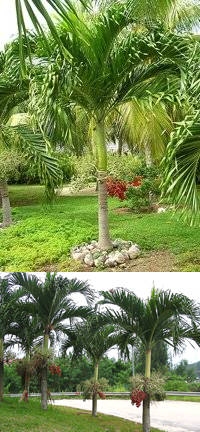
Manila/Kerpis Palm, A growing favorite among palm collectors.
This stocky, single-trunked palm with stiffly arched, six-foot-long, bright green fronds is noted for the fall and winter appearance of the very showy clusters of glossy, bright red fruits which hang below the leaves at the base of the crown shaft
The Christmas Palm is moderately salt tolerant prefers moist well drained soil. To avoid root rot don’t let it sit in water. It likes full sun but can also grow in broken shade. It can tolerate drought for a short time when mature enough. It is not considered cold hardy and will not tolerate frost well. It does not require much maintenance. The only thing you need to do is to remove old dead leaves to keep it looking neat.
Christmas Palm Tree is great for indoors.
But need to be exposed to full sun for a while if the leaves begin to yellow.
(germinating/guideline only)
Light: Prefers full sun though can tolerate semi-shade.
Moisture: Moderate water regularly. Quite drought and salt tolerant.
Soil: Grow in a wide variety of well-drained soil – can be clayey, loamy, sandy, slightly alkaline or acidic. •Propagation: scatter and push them about 1 cm deep into your garden bed or potted soil at a sunny spot. With regular watering, they should germinate within 10days-1 month. Germination can be hastened by soaking the seeds for 3 days or by scarifying before planting.
$3.55
"Snowy Orchid"
10 Fresh Snowy Orchid Tree Seeds
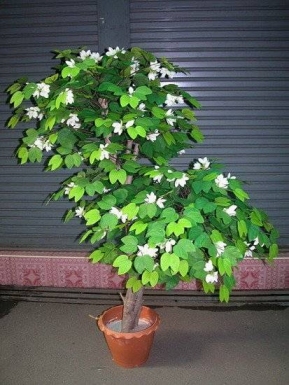
Bauhinia acuminata is a species of flowering shrub native to tropical southeastern Asia.
Common names include: Dwarf White Bauhinia, White Orchid-tree and Snowy Orchid-tree from Thailand, Malaysia, Indonesia and the Philippines.
It grows two to three meters tall. Like the other Bauhinia species, the leaves are bilobed, shaped like an ox hoof; they are 6 to 15 centimeters long and broad, with the apical cleft up to 5 cm deep; the petiole is 1.5 to 4 centimeters long.
The flowers are fragrant, 8 to 12 centimeters in diameter, with five white petals, ten yellow-tipped stamens and a green stigma.
The fruit is a pod 7.5 to 15 centimeters long and 1.5 to 1.8 centimeters broad. The species occurs in deciduous forests and scrub.
It is widely cultivated throughout the tropics as an ornamental plant.
$2.35
"White Humming Bird"
20 Seeds White Vegetable Humming Bird, Sesban, Agasta
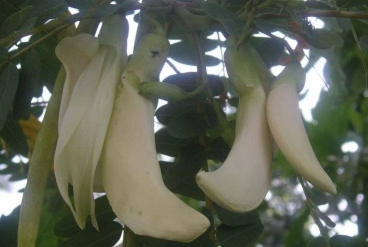
Sesbania grandiflora
Vegetable Hummingbird - a softwood tree with lax racemes of usually red,pink or white flowers; tropical Australia and Asia; naturalized in southern Florida and West Indies
It is a fast-growing tree with a typical adult height of between 3 and 5 m. The leaves are regular and rounded and the flowers white and large, very characteristic. The fruits look like flat, long and thin green beans. The tree thrives under full exposure to sunshine and is extremely frost sensitive.
The flowers can be steamed and are eaten as a thai vegetable.
$2.25
"Red Humming Bird"
20 Seeds Red Vegetable Humming Bird, Sesban, Agasta
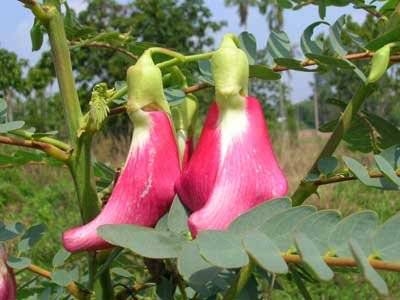
$2.25
Frangipani Flowers
Adenium Flowers
Fruits
Other Flowers
Vegetables
Herbs
- Fresh and viable seed
- Latest seasons crop
- Direct to your door
- Great Value
- Unusual Varieties
- Pure, Natural, Non-GMO
- Global Delivery
- Secure Checkout

